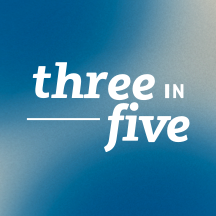Explore institutional insights

Client sign in
- Please enter a search term.
-
Insights
Stay up to date

Market update

Investor insights
-
Investments
Stay up to date

Market update

Investor insights
-
About us
Stay up to date
Learn more about our investment group

Market update

Investor insights
- Please enter a search term.
- Investments
-
Insights
- Back
- Insights
- Insights Overview
-
All insights
- Back
- All insights Overview
- Q3 2021: Investment grade private credit update
- Evaluating private credit opportunities in today’s market
- 2022 BentallGreenOak Perspective report
- The case for real estate
- The Impact of Rising Rates – LDI Client Update
- Global Investment Outlook 2022
- Investing in an inflationary environment
- Q2 2022: Investment grade private credit update
- Regulatory Update - Schedule D Part 1 (Bonds)
- Q3 2022 Investment Grade Private Credit Market Update
- Crescent Capital Markets Q3 2022 Update
- Multi-Asset Credit Strategy: October 2022 Update
- Investing into the rate-hiking cycle
- Multi-Asset Credit Strategy: November 2022 Update
- Multi-Asset Credit Strategy: December 2022 Update
- 2023 Global Investment Outlook
- Q4 2022: Investment Grade Private Credit update
- Multi-Asset Credit Strategy: January 2023 Update
- Fireside chat: Seize new opportunities in bonds and structured credit
- Q1 2023: Investment Grade Private Credit update
- Q1 2023: Crescent Capital group market commentary
- Crescent experts Q&A: How innovation will drive private debt forward
- June 2023: Private Credit Insights
- The BMA’s upcoming regulatory review
- The Elusive Recession - Commentary by Crescent Capital Markets
- 2023 Mid-year Global Investment Outlook
- Commercial mortgage-backed securities are in the spotlight again, but this isn't 2008
- Q2 2023: Investment Grade Private Credit update
- Cautious optimism
- Q3 2023: Investment Grade Private Credit update
- Narrowly syndicated credit: yield opportunities in an underexplored niche
- Don't rest yet, the recession will rear its head in 2024. Here's how to protect your bond portfolios
- 2024 Global Investment Outlook
- Q4 2023: Investment Grade Private Credit update
- Looking under the hood at below-IG fixed income
- Q1 2024: Investment Grade Private Credit update
- Global insurance group
- Retirement plan solutions
- Sustainable Investing
- Market updates
-
Three in Five Podcast
- Back
- Three in Five Podcast Overview
- Mark Attanasio on the changing landscape of private credit
- James Slotnick on the U.S. midterm elections
- James Slotnick on the 2022 U.S. midterm elections
- Andrew and John on commonalities in investment grade private credit and narrowly syndicated bank loans
- Laila on operational considerations for investment grade private credit investors
- Cliff Corso on opportunity in the high net worth market
- Kate McKeon on sustainable investing and Net Zero
- Ben Greene on education, allyship, and the trans experience
- Melissa on the importance of the client experience
- Cristina Medina on Invest in Girls
- Steve on the Canadian P&C insurance market
- Rich and Peter on growing stress in the banking sector
- Doug on the debt ceiling
- Jim Blakemore on real estate debt
- Chris and Tim on the Special Financial Assistance Program for Taft Hartley plans
- Veronique on the evolution of LDI investing in Canada
- Chris Wright on the future of private credit
- Beth Brown on workplace burnout
- D.J. on the CMBS market
- Josh Davis on inner mastery and effective leadership
- James Slotnick on the politics of raising the U.S. debt ceiling
- Kevin Quinlan on climate change as a material investment risk
- Steve Peacher on the 10-year anniversary of SLC Management
- David Hamlin on fundamental credit research
- Michael Schnitman on alternatives in the high net worth space
- Steve Peacher reflects on challenges and milestones in 2023
- Subscribe
- About us
- Careers
- Contact us
- Newsroom
- Thank you
- U.S. | EN

Welcome!
Please select your country and language below:
Episode 78
JANUARY 23, 2023
Nitin on how the current market is impacting insurance clients
Nitin Chhabra, Managing Director, Head of Insurance Client Relationships & Solutions at SLC Management, discusses how rising rates and inflation are impacting insurers' portfolios.
Steve Peacher: Hi everybody. It's Steve Peacher, president of SLC Management. Thanks for dialing in today. Once again, I’m with Nitin Chhabra, who's head of our insurance client relationships and solutions. So, Nitin, thanks for taking a few moments to talk about interest rates and the impact on insurance companies.
Nitin Chhabra: Thanks, Steve.
Steve Peacher: So, as I said, obviously there's been a huge change in the bond market and the level of interest rates. Insurance companies have many different sensitivities to interest rates, and that's what we want to talk about. So, if you if we look back over 2022 we saw a huge hike in interest rates that had an impact on insurance companies’ capital positions, but it also will allow them to earn more investment income going forward. So, there's a bit of a tradeoff. So, as you interact with insurance clients and insurance companies in the marketplace how are people viewing that trade off?
Nitin Chhabra: Yeah, I'd say most are happy with that trade off. And I think to understand why, let's step back and consider the importance of investment income to insurance companies. So, as you know, insurance companies have two primary sources of income: underwriting income and investment income. And if we look back at the P&C insurance industry in every any given year, more often than not, the industry loses money on the underwriting side. So, effectively there was a 25-year period, from 1979 to 2003 where the industry in aggregate produced an underwriting loss in every single one of those years.[1] Think about that, for an industry whose primary objective is to collect more premium than it pays out in losses and expenses, they fail to do that for 25 consecutive years. Now, they could afford to do that because interest rates were much higher. So, a lot of that was intentional, but it's still kind of mind boggling when you hear it, you know. The point is investment income has been and will continue to be the driver of earnings, so insurance companies really welcome this increase in investment income that they'll see over the coming years. If we look at where we are today, our view is that there's a real near-term opportunities for insurers to lock in some really attractive fixed income yields that will benefit the portfolio for years to come and the, you know, the length of that opportunity it depends on you know how soon you think the Fed will reverse course and cut rates.
Steve Peacher: Obviously one of the biggest reasons that interest rates have gone up. so much is because of inflation. We've seen a big spike in inflation and that has the impact can have the impact of increasing raising insurance claim amounts, and that has an impact on insurance companies obviously. So how has that dynamic impacted the ability of insurance companies to take advantage of the higher yields that they're seeing?
Nitin Chhabra: Yeah, you're right. The industry has seen elevated claims levels across virtually every line of business, some lines more than others. And those higher claim amounts have directly impacted that ability of companies to reinvest in this market. So, if I look across our insurance company client base, I would bucket them into let's say four groups based on the degree to which they've been able to capitalize on these higher yields. So, if we order them from least to most, that first group would be, you know, the ones that have seen some really elevated claim severity, they have not been able to reinvest, and they were forced to sell bonds to cover claim payments, and those bonds that they were so selling we're oftentimes at a loss. The next group is, again, companies that haven't been able to reinvest, but we're able to cover claim costs through principal interest payments, so they were not for sellers. The third group is those companies that were able to reinvest all cash flows and thereby improve their book yield. And then the group that benefited the most was the ones that were able to reinvest in and improved book yield but also had the ability to harvest losses and reinvest those proceeds into these higher yields that are available. So, fortunately, we've seen very few clients in that forced seller group, and that's a function of working with those clients to ensure that their portfolio maturity structure is aligned with their liabilities in a way that provides consistent amount of cash flow to cover any higher-than-expected claims activity. So, we do strategic asset allocation studies, this exercise, the very important part of setting the duration target and assessing how much interest rate risk the company can take.
Steve Peacher: When we spoke last year and recorded a “Three in Five” podcast we were talking about alternative asset classes and insurance companies’ interest in areas like infrastructure and private credit, commercial real estate. And now that you've had a rise in core bond yields does that change how insurance companies look at those asset classes and the risk reward that they think of when they think about the prospect of moving into alternative asset classes?
Nitin Chhabra: Yeah, a lot of those alternative asset classes, you know, real estate, infrastructure, private credit, a lot of them started gaining traction with insurers over the past 5 to 10 years, as they search for yield in a market that really wasn't compensating investors a whole lot for investing in core fixed income. All of those asset classes offered extra spread and higher expected returns compared to IG public bonds. Now fast forward to today and yields on core fixed income are a lot more attractive. But those alternative asset classes continue to offer that additional spread and higher expected returns. Now, if we think about return on equity targets for insurance companies they're often expressed as a spread above a risk-free rate. So, for example, if a company's ROE target is 700 basis points above the risk-free rate that means the ROE target was around 8% a couple of years ago, but it's increased to around 11% today given that move up and the risk-free rate. So, if a company is trying to improve its ROE to reach its target and their investment strategy is to make no changes simply because core bond yields are higher today, well, they'll still fall short of that ROE target, so they'd be well served to explore these higher yielding investments, or, or do something on the underwriting side. A hesitancy we see from investors with some of these alternative asset classes can be their complexity and their perceived risk. From my experience, I’d say insurers are getting increasingly more comfortable with these issues and an important part of that evolution is using strategic asset allocation analysis to show the impact of the diversification benefit that these investments have, the impact they can have on a portfolio in terms of the risk return. So, if an investment can improve overall expected returns more than it raises volatility, it makes for a compelling option. And as we enter what many think is a recessionary period some of these assets also come with built in downside protection features which are attractive in this environment. So, to answer your question, we think we're in the early innings of this trend towards more alternatives, and it's something I think we'll be talking about for a long time.
Steve Peacher: Well, I think all of your comments highlight all the different considerations that come at insurance companies with a rise at yields. It impacts different sides of their business, their investments, how they think of different investment opportunities. I mean, insurance companies are so sensitive to yields and it really changes the landscape about how they have to think about their business. But I think generally net/net what I take away from your comments, is net/net a positive for the insurance industry. But there's a lot to consider. So, let's not talk about insurance companies, let’s talk about something near and dear to both of our hearts, even though it's middle of winter, and that's baseball. Obviously, I’m a Red Sox fan. I know, you've been allowed on this podcast even though you're a Yankees fan. So, we've put that aside. But I don't know the anecdote, but I'm told you have a really good story about the period in 2003, 2004, when that rivalry was at its peak and great to watch. So, tell us what's the story.
Nitin Chhabra: Yeah, I actually have two stories from the era - one good and one bad. First one I was at game 7 of the 2003 ALCS at Yankee Stadium, also known as the Aaron Boone Game. It's easily the greatest sporting event I've ever attended in person, and I somehow walked out of there with the back of the seat I was sitting on. That's a long story. That's for another day. So, that's a good story. Now, the bad one is this. So the following year, as you know, the Yankees were leading the Red Sox 3 games to nothing in the ALCS. I was living in Boston at the time. On the morning of game 4 I wake up, I put on my Yankees jersey, my Yankees hat, and I start walking downtown to meet a friend for lunch. I get to a stoplight, and I’m waiting for the walk sign, I look over to my right, and it's Stephen King, you know the author, who he's got a Red Sox jersey, Red Sox hat. He's a huge Sox fan. They show him at all the games, so I instantly recognized him. When we make eye contact, he sticks out his hand, introduces himself, which is really cool. We have a really great, you know, like 10 min conversation about the series as we're walking in the same direction, and then we get to the end of the street. We're about to head in opposite directions and I ask him before he goes. I go “Hey? Do you still have hope?” you know given that his team was down 3 nothing, and no team had ever come back, and his demeanor completely changes. He sticks his finger literally in my chest, touching it, and he goes “A long time ago, long before you were ever born, Yankees played the Pirates in the 1960 World Series, and the Yankees were dominating the series. And you know that you know how that turned out?” And I’m like, yeah, Mazeroski, walk off home run, Pirates win. And he goes “Exactly.” And he just walks away. No smile, no handshake, no nothing, just walks away, and then the Sox’s pull off four straight, I still feel to this day that that interaction had something to do with it.
Steve Peacher: That was the moment where they broke the curse of the Bambino. Right there, you were there front and center. That's a great story. Yeah, I have a I don't have an anecdote that good. But I have a lot of memories, as I had to do psychotherapy with my kids around the losses in 2003. But well listen. That's a great story, and thanks a lot. Great discussion about what's really top of mind right now with a lot of our insurance clients, which is, you know, what do they do in this environment with the higher yields. So, thanks for taking the time and thanks everybody for listening to this episode of “Three in Five.”
[1] Source: Insurance Information Institute. Data as of 12/31/2018.
This content is intended for institutional investors. The information in this podcast is not intended to provide specific financial, tax, investment, insurance, legal or accounting advice and should not be relied upon and does not constitute a specific offer to buy and/or sell securities, insurance, or investment services. Investors should consult with their professional advisors before acting upon any information contained in this podcast. Any statements that reflect expectations or forecasts of future events are speculative in nature and may be subject to risks, uncertainties and assumptions and actual results which could differ significantly from the statements. As such, do not place undue reliance upon such forward-looking statements. All opinions and commentary are subject to change without notice and are provided in good faith without legal responsibility.
SLC-20230119-2688505



